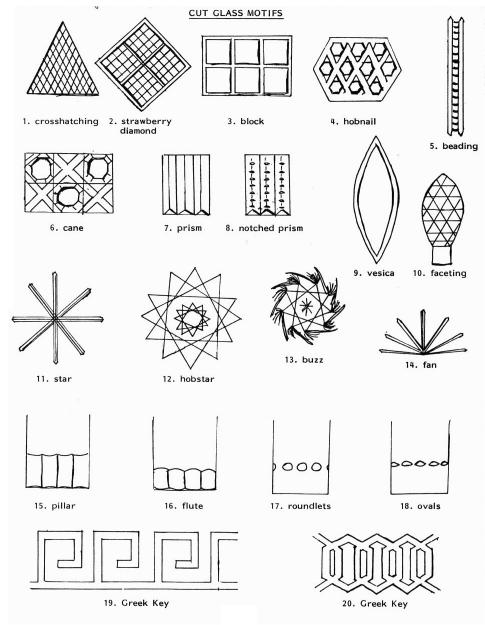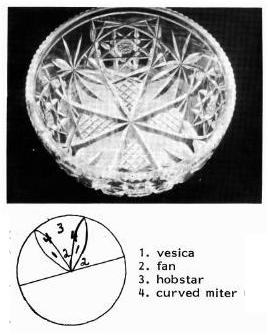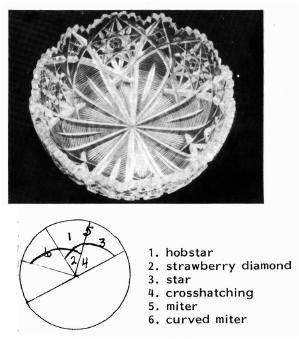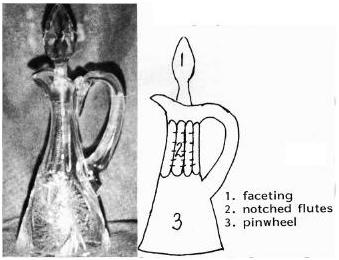National Depression Glass Association
Preserving America's Glass Manufacturing Heritage
Engraving and Cutting Glass
by Bettye Waher
Glass Review - December 1981
That ancient artist and craftsman, the lapidary, cut and polished precious stones, at first with hand tools and later with the aid of wheels. When his skill was transferred to glass, two methods evolved that are now known as engraving and cutting. Both techniques use wheels and both incise the surface of the glass, but there are several differences. One is in the style of design that results; the realistic motifs (floral and figural) are produced by engraving, cutting designs are usually geometric.
There are four basic cuts used in cutting glass, one of which is the miter. It is comparable to the straight line in geometry; and it can belong, short, deep, or shallow. It is made with a wheel that has a V-shaped edge.
The curved miter is made by deflecting the glass out-of-line with the wheel. It was developed by John S. O'connor of Dorflinger and Sons in 1886.
Faceting is done with a flat-edge wheel and is used where two plane surfaces meet. Around mirrors it is called beveling. Faceting is done on glass for the same reason it is on diamonds, to present many "faces" to catch and reflect the light; thereby giving more sparkle and brilliance. It is often used on stoppers and stems.
For concavities such as roundlets and ovals, called printies, a wheel with a slightly convex edge is required.
By using these four cuts, about twenty motifs have been devised as shown in the large illustration below. By combining motifs, hundreds of designs have been created (examples shown below) many of which have been patented. When the same design appears on each piece of table service, it is then known as a pattern.
References:
- Boggess, Bill and Louise. American Brilliant Cut Glass. New York, Crown Publishers, Inc. 1977
- Oliver, Elizabeth. American Antique Glass. New York, Goden Press. 1977
|
 |
| Examples of Cutting Motifs combined to form a design | ||
|---|---|---|
 |
 |
 |